Equipment
Where Do Training Agencies and Manufacturers Stand on Mouthpiece Straps?
We asked a variety of tech agencies and CCR manufacturers where they stand on mouthpiece retaining straps and whether or not they advocate their use and or mention them in courses.
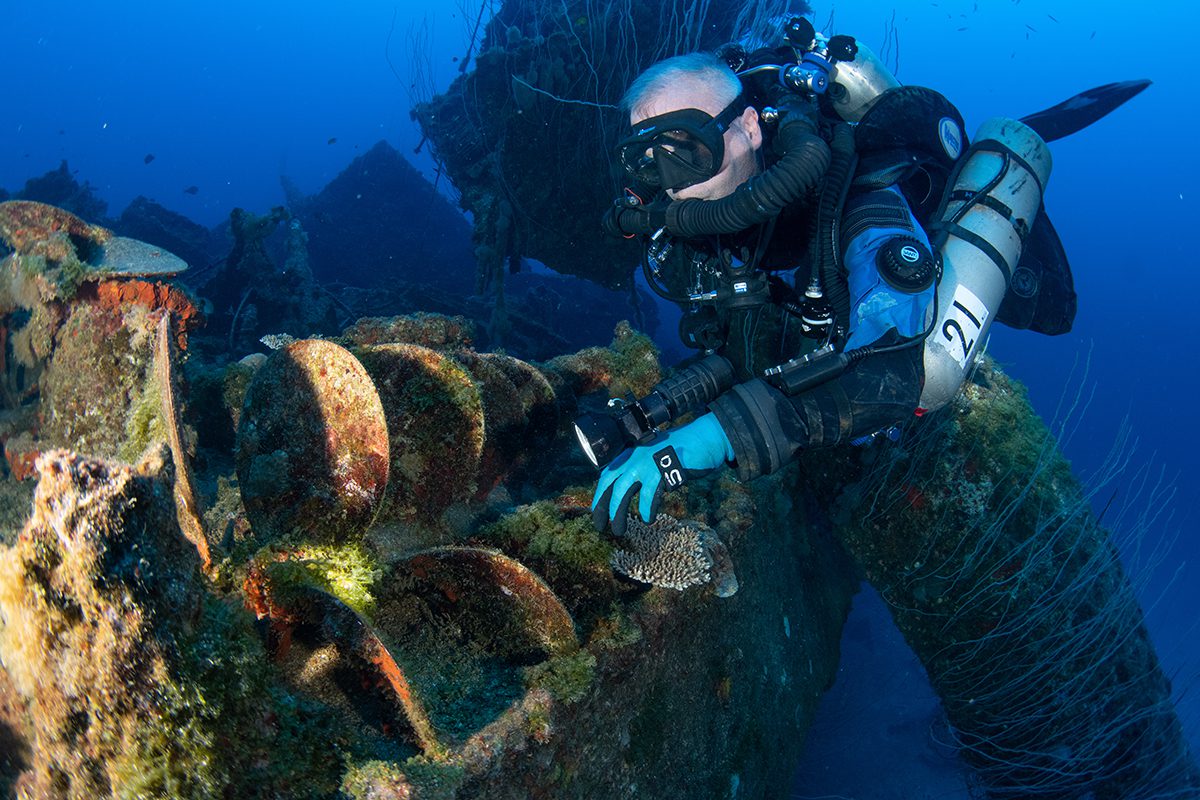
Header photo by Jesper Kjoller
We surveys CCR divers from around the world. Here are the results.
Can Mouthpiece Straps Improve Safety?
A Mouthpiece Restraining Strap Just Might Save Your Life
Why GUE Has Not Adopted The Strap
First and foremost, GUE constantly evaluates and develops technologies and methodologies with the ultimate goal of offering increased safety, efficiency, and enjoyment to our divers. One such device is the Mouthpiece Retaining Strap (MRS) or more commonly called—the gag strap. The purpose of the MRS is to secure the diver’s mouthpiece (DVS or BOV) in place using an adjustable rubber band around the diver’s head. In theory, this would retain the mouthpiece in the diver’s mouth even during an adverse event leading to unconsciousness and thereby prevent drowning and death.
The origin of the MRS comes from the military diving community where it is used as an alternative to Full Face Masks (FFM). There is at least one study indicating a reduced risk of drowning while diving rebreathers under military operations with the use of a MRS. However, one should keep in mind that military rebreather diving applications are quite different compared to our technical diving application. Where the military divers carry no bailout, we certainly do. We also have more obvious and less concealed communication and information devices, such as bright head Up Displays (HUD) and controllers giving us a fair chance of detecting malfunctions.
Since our technical diving application is different, and our methods for bailout need to be uncomplicated and unrestricted, we have found that the use of the MRS would be unlikely to reduce the risks, and as such, we don’t advocate for the use. We don’t prevent the use per se, but we prefer a holistic and consistent approach when feasible.
-Richard Lundgren, GUE Technical Administrator
Reference:
Haynes P. Increasing the probability of surviving loss of consciousness underwater when using a rebreather. Diving Hyperb Med.2016 Dec;46(4):253-259.
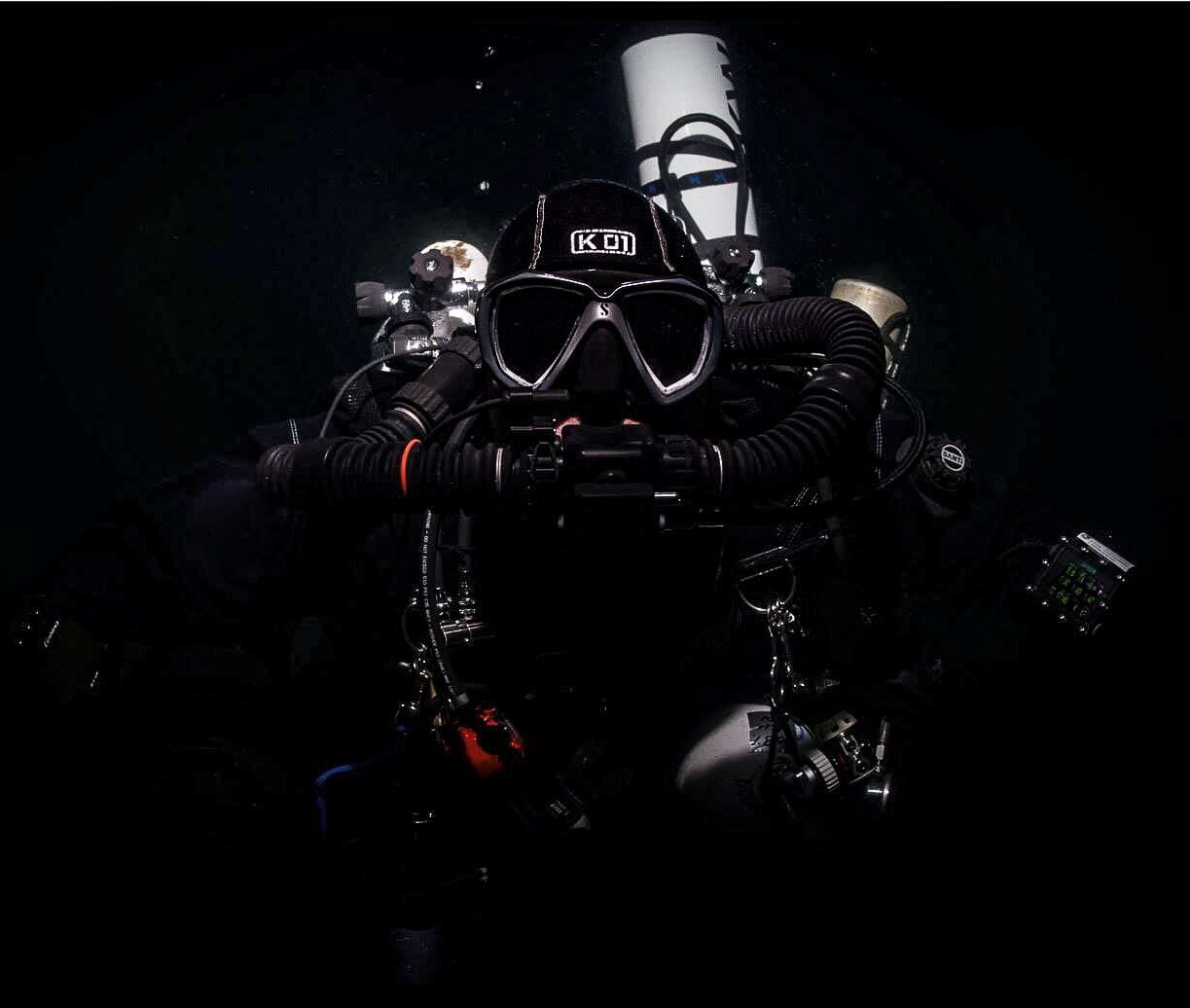
PADI’s Position on Retaining Straps
Community practice regarding the use of retaining straps in CCR diving remains divided, so at present, the choice to use them or not lies with the instructors and their students. The only exceptions are if the particular CCR manufacturer prohibits or requires strap use with their units, in which case manufacturer requirements should be followed. If and as community practices change, the requirements in PADI courses will change accordingly.
–Karl Shreeves, Technical development executive, PADI
RAID Encourages Their Use
RAID encourages the use of a retaining strap, but it is not mandated. Simple logic dictates that some CCR users do not have a true BOV installed and do not have off-board diluent (bailout gas) plugged into the unit. A retaining strap/gag-strap may not be the best option in that case. (Personal note: When diving my old pelagian rebreather, I have the mouthpiece “loose” and a bailout second stage on a necklace. I only had to use it in earnest once but I believe it would have been a slower switch from the loop to OC if I’d worn the strap.)
That said, the unit I dive most of the time has a BOV (good idea) and I always wear a retainer. I am thankful for it on EVERY long dive because it does an amazing job of helping to alleviate jaw fatigue. An added benefit is that it does prevent the mouthpiece dropping out of a diver’s mouth whenever they are gobsmacked by the behaviour of others.
–Steve Lewis, RAID training director
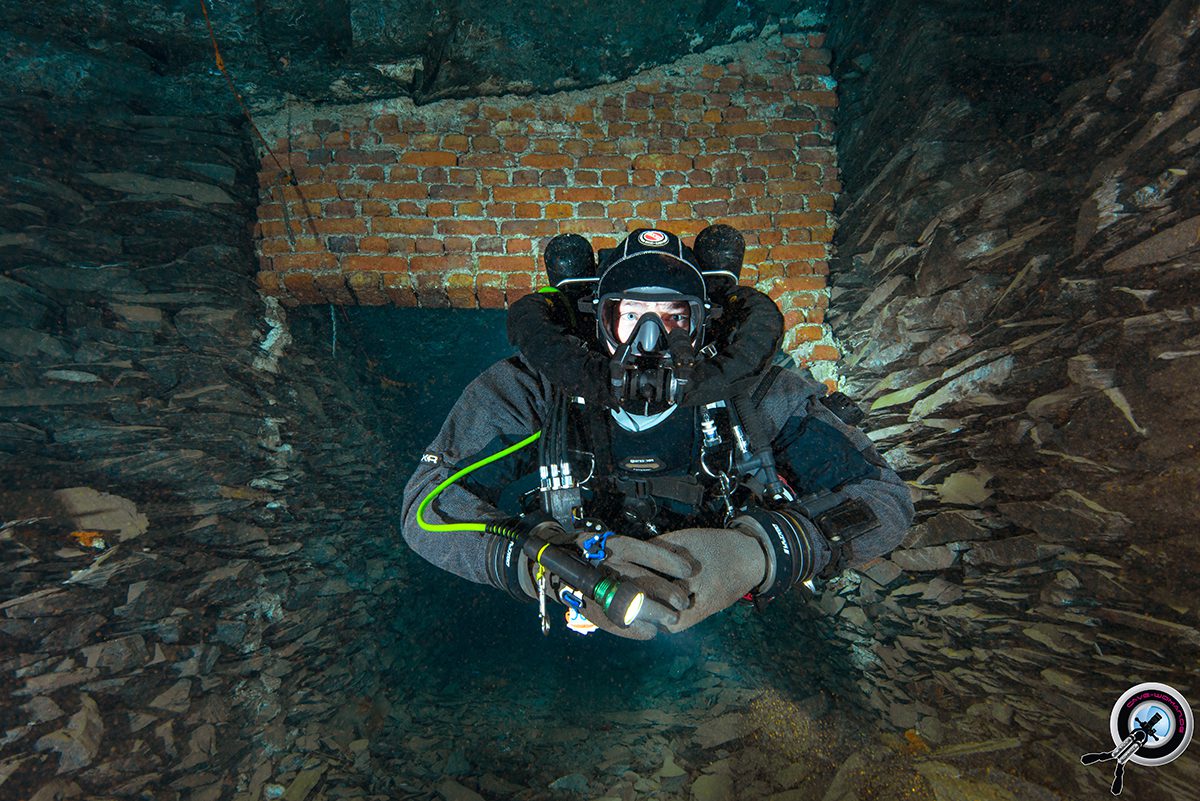
ANDI Says Usage is Optional
We have decided to add mouthpiece retaining straps to all of our CCR texts along with a few photos and explanations, in the same way that we explain the Full Face Mask. The benefits are these…The deficits are these…
This will show the students the safety advantages, how to use the device and when it would be used. Usage is optional. A limitation caused by the usage of a strap is increased difficulty and additional steps in performing off-board gas switches. Instructors agree that its use adds to potential issues during training.
Eduardo Jaimes Fabres, our training director commented that “During the last DEMA show I saw a good option made by AP Diving.” It’s basically a silicone strap with two soft large O-rings. It looks good, inexpensive and the user can still use his/her mouthpiece. My personal preference is a standard DSV or BOV with quick access to bail-outs. In the ANDI system a user can dive safely with the DSV and a redundant breathing system (RBS), which ANDI advocates for all divers and levels.
The primary reason for use of the mouthpiece retainer strap is its protection from drowning during a CNS seizure. That’s it. If one is running the bottom mix at a PO2 of 1.2-1.3 it seems to be a quite unnecessary precaution. Perhaps a better question for the industry; “Is there any evidence of CNS oxygen toxicity at 1.5, 1.45. 1.4?”
Sorry for the history lesson here but I remember discussions alluding to the dangers of a PO2 dosage of 1.6 atm for open-circuit SafeAir (nitrox) diving, even though no proven incidents were documented at that dosage. Then we stated that 1.5 is safer. Oxygen management is very difficult and unpredictable. 1.4 is even safer still. Well… for longer dives we should be using 1.3. Extended range diving is best served with 1.25 oxygen dosages. Keep going at this and we are back to diving air with fancy gas controllers.
–Edward A. Betts, founder and Executive Director, ANDI International
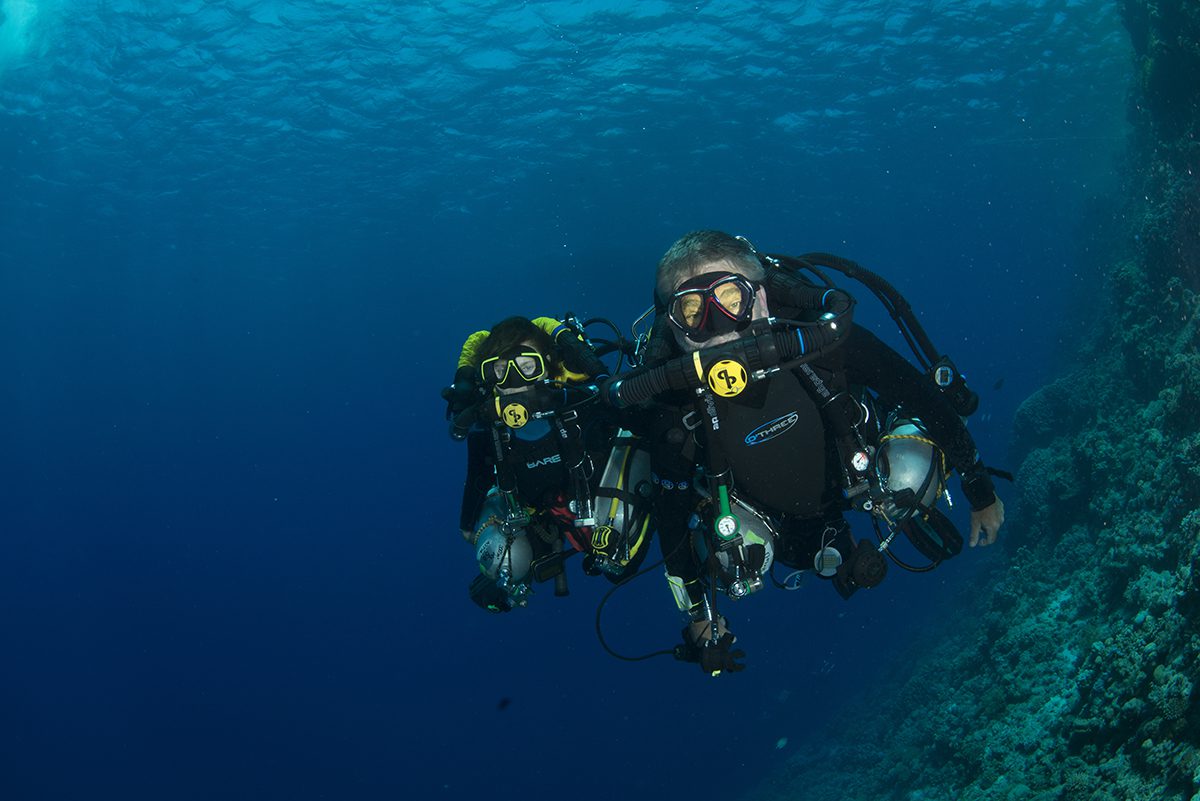
TDI|SDI|ERDI|PFI
Did not wish to take a position at this time.
Rebreather Manufacturers
AP Diving Is Favorable And Supplies A Strap
On balance, we are in favour of mouthpiece straps. On longer dives they can reduce jaw fatigue, but this can also be done by ensuring the mouthpiece hose lengths are correct for you—too many divers look like they’re wearing a set of bagpipes when they dive.
Of course, straps are like a seatbelt in a car from a safety point of view, they’re there to help if you have an accident. Prevention of accidents is of course the first priority, but it is clear a lot of things have to line up for a mouthpiece strap to be of any use in an emergency situation; the mouthpiece strap would only be of use if a dive buddy is present AND is capable of offering assistance, AND if the diver does still manage to make a seal at the mouthpiece despite being unconscious. So you can see a lot of things need to be in line for the strap to be of any use in an emergency, and for that reason, many divers don’t see the benefit in one. We do mention the benefits of the strap in the instruction manual and do offer a strap as an optional extra.
–Martin Parker, Managing Director AP Diving
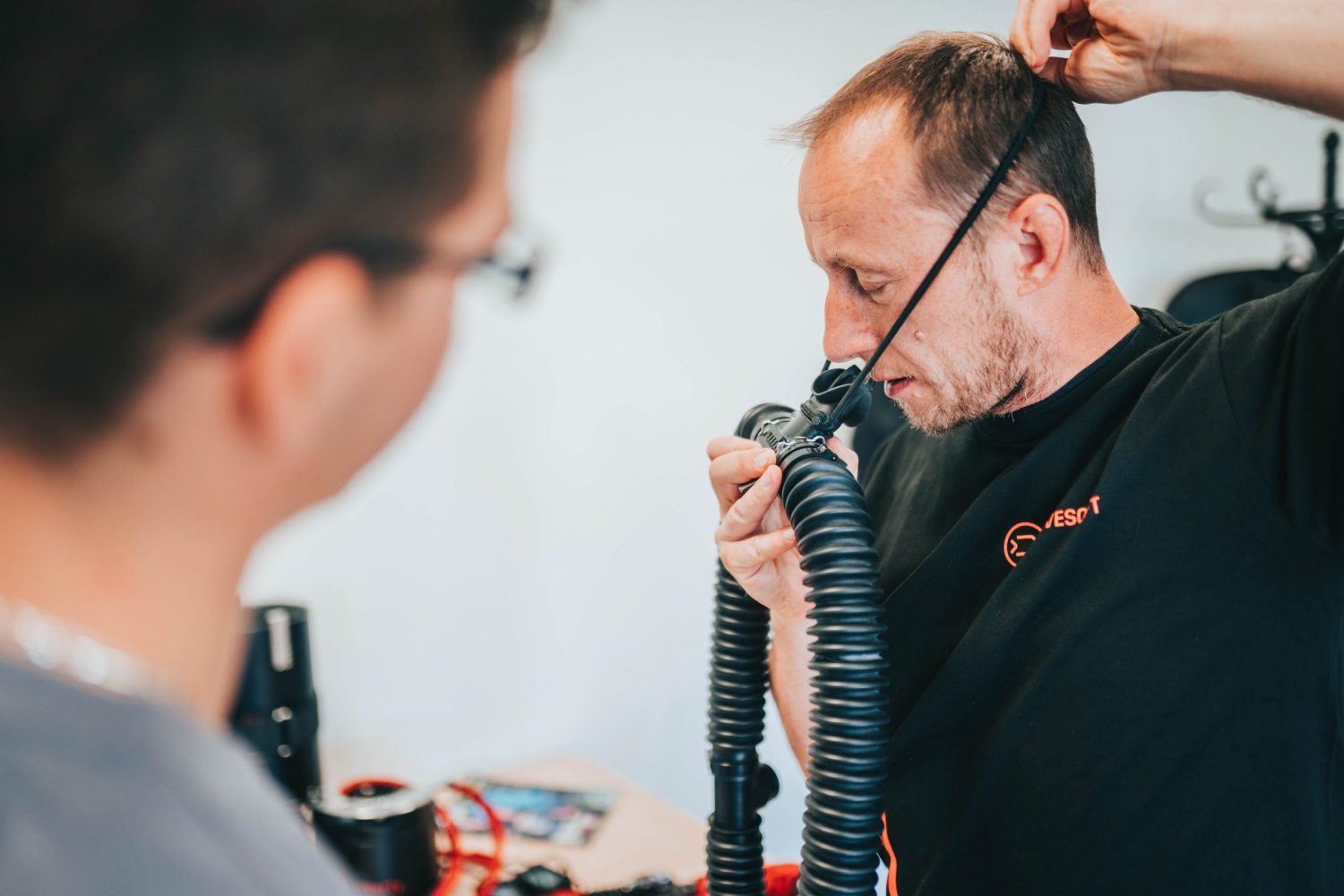
Divesoft Encourages and Supplies A Simple Strap
We supply our Liberty rebreathers with an elastic bungee cord, which serves as a simple retaining strap. But it is just a simple solution. We also offer the gag strap as an option in our configurator. Unfortunately, we do not currently mention retainer straps in our user manual, but it is a good idea to add it to the manual and also mention it in official factory training powerpoint slides as well.
We definitely advocate their use. I was a part of a team which researched the probability of rescuing an unconscious rebreather diver. The result of the study was absolutely clear. A diver with the gag strap has a much higher chance to survive going unconscious, and a very low chance without it. I really appreciate InDepth’s effort to address this, because I think this is a very important but unfortunately neglected topic.
-Jakub Šimánek, Factory Instructor Trainer Divesoft
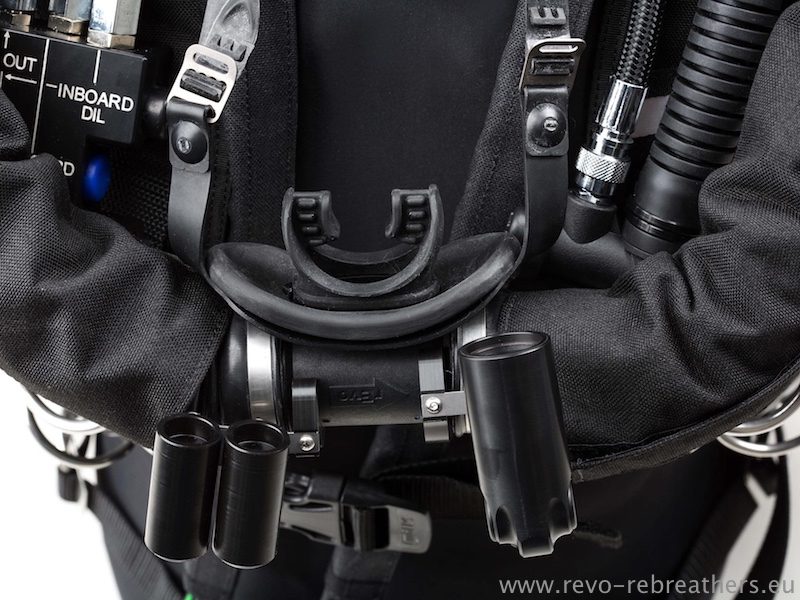
rEVO Has Supplied and Advocated from Day One
Since the start of the rEvo production, we have always been (and we were the first for civilian use) supplying mouthpieces with lip seal and retainer straps standard on all units. It’s the same for training on rEvo units: the use of this mouthpiece with straps has always been mandatory, and it is mentioned in the user manual and in all training material.
Why? Simple! Because underwater, people never die because of bad gas (almost never…). If they die, they do because they breathe water. So if you can prevent, or delay, the breathing of water, you increase the likelihood of survival. Furthermore, a correctly fitted gag strap prevents buoyancy loss in case of unconsciousness .
–Paul Raymaekers, rEvo Rebreathers founder & CEO
Hollis Offers A Strap for the European Market & When Requested
With the recent CE approval of the Prism 2, we are offering a mouthpiece retention strap for the European market purchases and for anyone that requests one. However, real world use of a strap is very low. Our statement in our user manual is as follows, “A mouthpiece retaining strap is included with the Prism 2 Rebreather. This part minimizes the ingress of water during normal use and ensures the mouthpiece is held in place and the diver remains on the loop in the event of a diver falling unconscious or having a convulsion while underwater.”
–Nick Hollis, Brand Manager, Oceanic & Hollis
Dive Rite Says Watch Your PO2s
We have looked at the issue, but the only one I know of is the Drager strap. I have tried variations, but I just don’t like it and we don’t provide one. It can only help in the case of O2 toxicity? Survive the seizure? With regard to CO2 build-up or hypoxia, I’m not sure what the results would be. At the end of the day, should we react to divers not watching their PO2 or maintaining gear, by forcing everyone to use what I see as an uncomfortable strap because it has saved a few lives? Or could the incident have been avoided in the first place?
–Lamar Hires, Founder and president Dive Rite
Inner Space Says Good For Jaw Fatigue
My experience with a head straps began in the military with Draeger LAR V (oxygen) rebreather. Their purpose was not to prevent drowning but to prevent jaw fatigue during the endless hours we spent in the water with a diver surface valve (DSV) in our mouth. You put it on and secured it. Did we always use it? No, and I was a Special Forces Combat Diver, Diving supervisor, and trained with Seal Team Five.
The Combat Diver school did not advocate the strap. I used it but didn’t think it was necessary. It was more in the way with a DSV. I did use a head strap for airborne operations when breathing hoses would flutter during the jump. I also used it with a scooter when hoses can also flutter. However, the LAR V does not have a bailout valve (BOV). I never advocated a strap as a diving supervisor, though I do think you should use one in airborne operations.
As I said, the head strap worked well for preventing jaw fatigue while diving. Also, the metal adjustment clasps on the Draeger strap worked great. I pondered whether to advocate and use a head strap when I started Inner Space. I think it is a good idea if you have a BOV. If you don’t it just slows down your gas switch. Also a lot of BOVs are big and heavy and can easily cause jaw fatigue so it is a good tool for that. In addition, if you passed out, it would aid in your rescue. It is a handy tool.
We looked at alternatives for preventing drowning. An old school half-facemask will prevent wet drowning. I have a good one from the fifties that seals around the mouth and buttons on the side. You still need a mouthpiece with it however to prevent CO2 build up. I think if the community got together it could create a new version of this for tech divers. The advantages are: no jaw fatigue, it seals around the mouth to prevent drowning in case the diver loses consciousness. It could be a little piece of insurance against wet drowning.
–Leon Scamahorn, founder and CEO Inner Space Systems
Note that Kirby Morgan Diving System makes half-mask called their M48 MOD-1 and the M48 SUPERMASK.
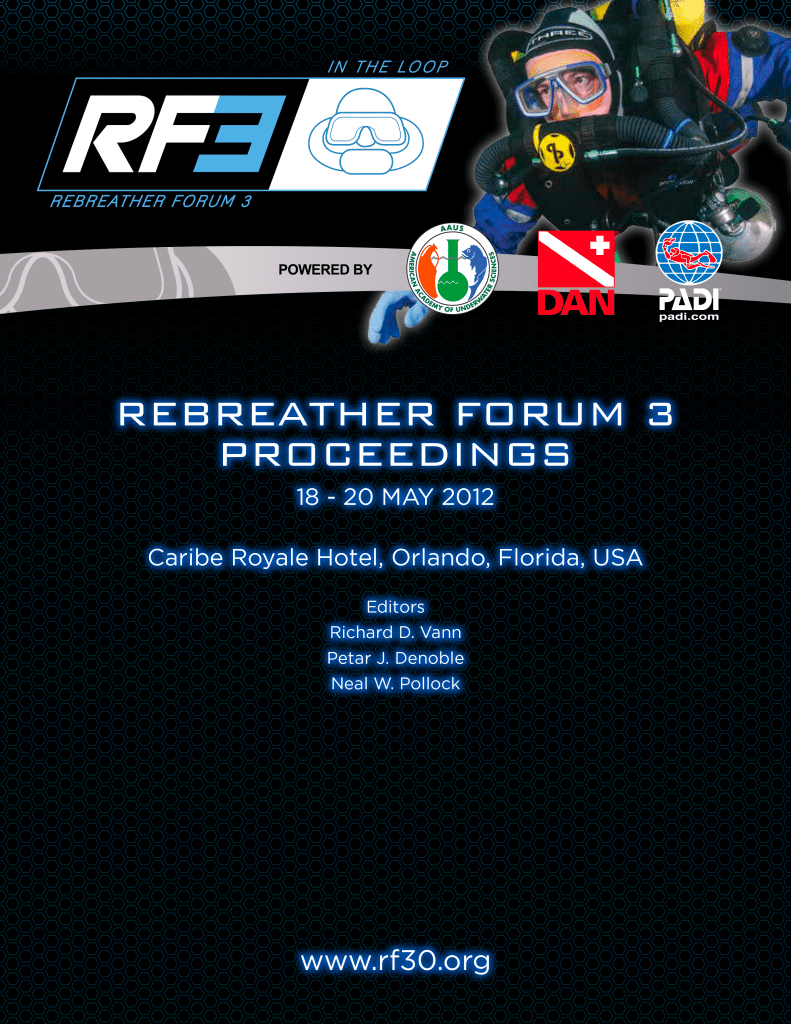
Rebreather Forum 3 (2012) Advocated Further Research
Mouthpiece retaining straps were addressed at Rebreather Forum 3, held in Orlando, Florida in 2012 and formed the basis (along with full face masks) of a Consensus Statement by the assembled body. See Rebreather Forum 3 Proceedings (pg 287-302).
Design and Testing 5. The forum identifies as a research question the issue of whether a mouthpiece-retaining strap would provide protection of the airway in an unconscious rebreather diver.
This is a unique statement as the only one in which we are proposing a research question to the research community. This arose out of Paul Haynes’ advocacy for the use of gag straps. In fact, the resulting discussion made it clear that here was a lot of ambiguity around people’s perceptions. To my knowledge, there are no data or even substantial practical experience that answers that question for us. This statement says, “The forum identifies as a research question the issue of whether a mouthpiece-retaining strap would provide protection of the airway in an unconscious diver.” We need to find a confident ethics committee or an imaginative way of figuring it out. Is there anyone who would like to speak to this?
PAUL RAYMAEKERS: I was not able to follow the presentation. I just hear that the question has no proof or any evidence that a mouthpiece-retaining strap has any efficiency. We did have a fatality a few years ago where it was clearly proven that when the jaw stress completely falls away, a correctly attached gag strap keeps the mouthpiece in place and no water comes into the driver’s lungs.
MITCHELL: If I am interpreting correctly saying there, there has been a case that you know of with a gag strap and mouthpiece [that stayed] in place. John, do you want to speak to this?
CLARKE: I think research would include looking at prior history. One case does not mean this has been solved.
FRANBERG: We come from the military community. I think that if we look at our own data from the fatalities, we may find information on the presence or absence of water in the airway.
MITCHELL: I like that idea. So, what we need is someone who has perhaps a Naval group with keen, young, research-hungry doctors who can start phoning up every navy in the world. My tongue in in my cheek. I have got a smile on my face. I think there probably may be enough information out there already to form this debate. We have just got to find it. It would be great to have that reported. If someone could compile the cases and report them, I think that would be a pretty powerful case. Is there anyone who objects to this statement in it’s current form? Carried as unanimously.






















































